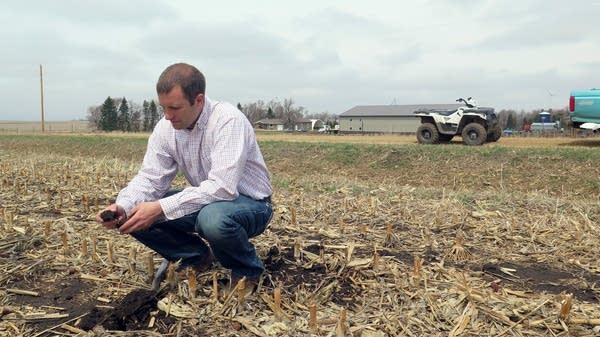As planting window closes, Minn. farmers face tough choices

Brian Fruechte examined the soil on his southwest Minnesota farm on May 1, 2018. Spring planting is about two weeks behind, and it will soon be too late to plant and expect an average harvest.
Mark Steil | MPR News 2018
Go Deeper.
Create an account or log in to save stories.
Like this?
Thanks for liking this story! We have added it to a list of your favorite stories.


